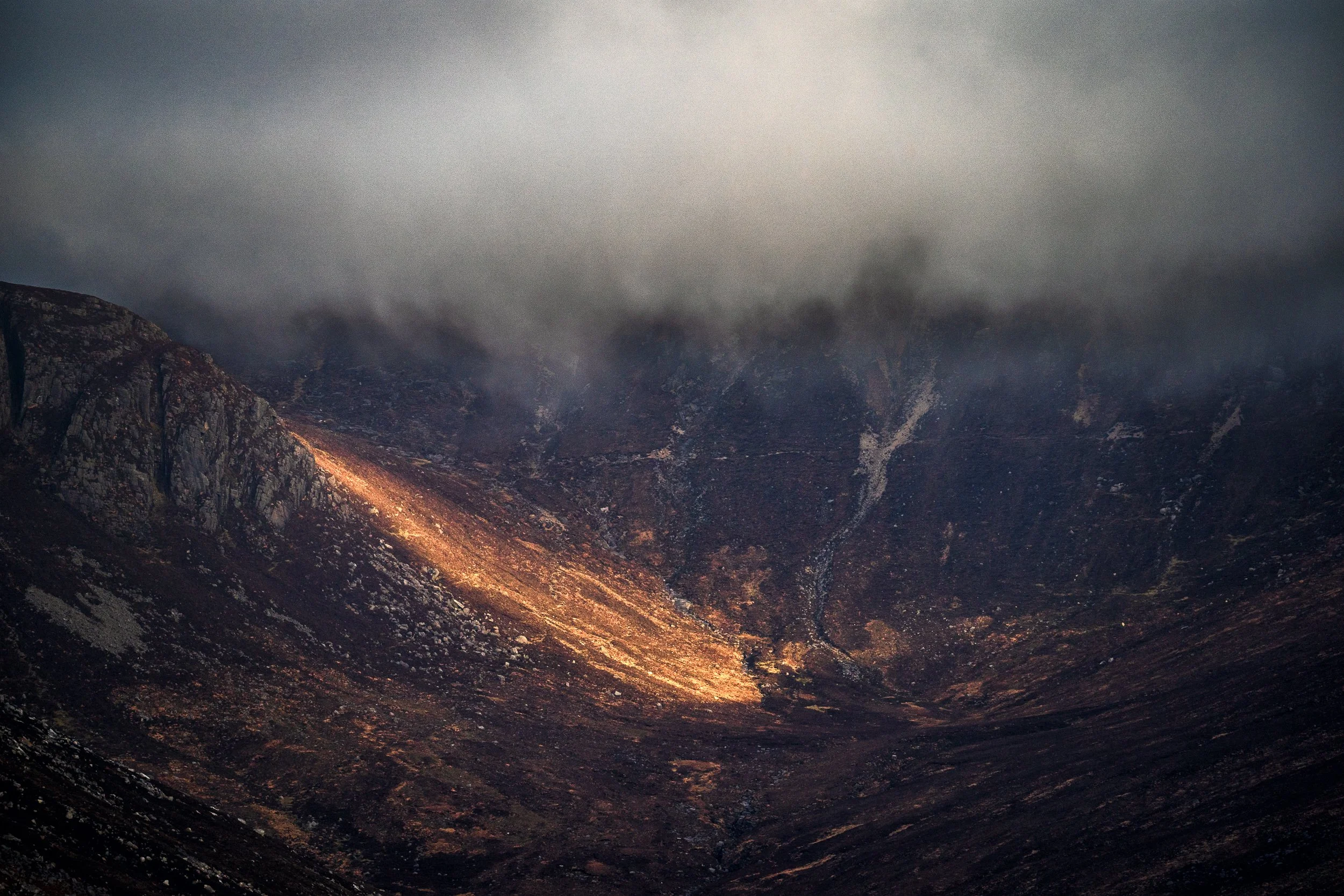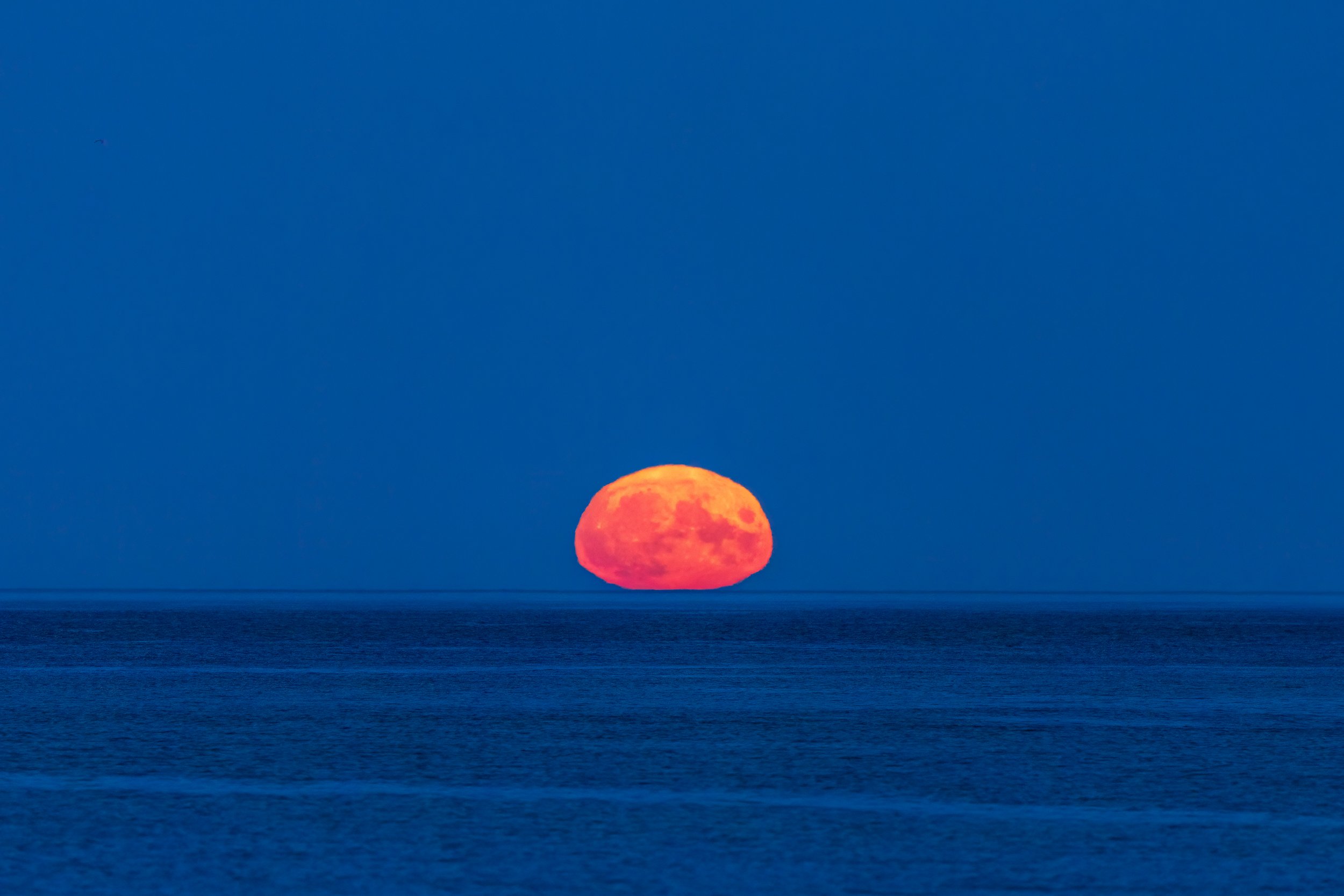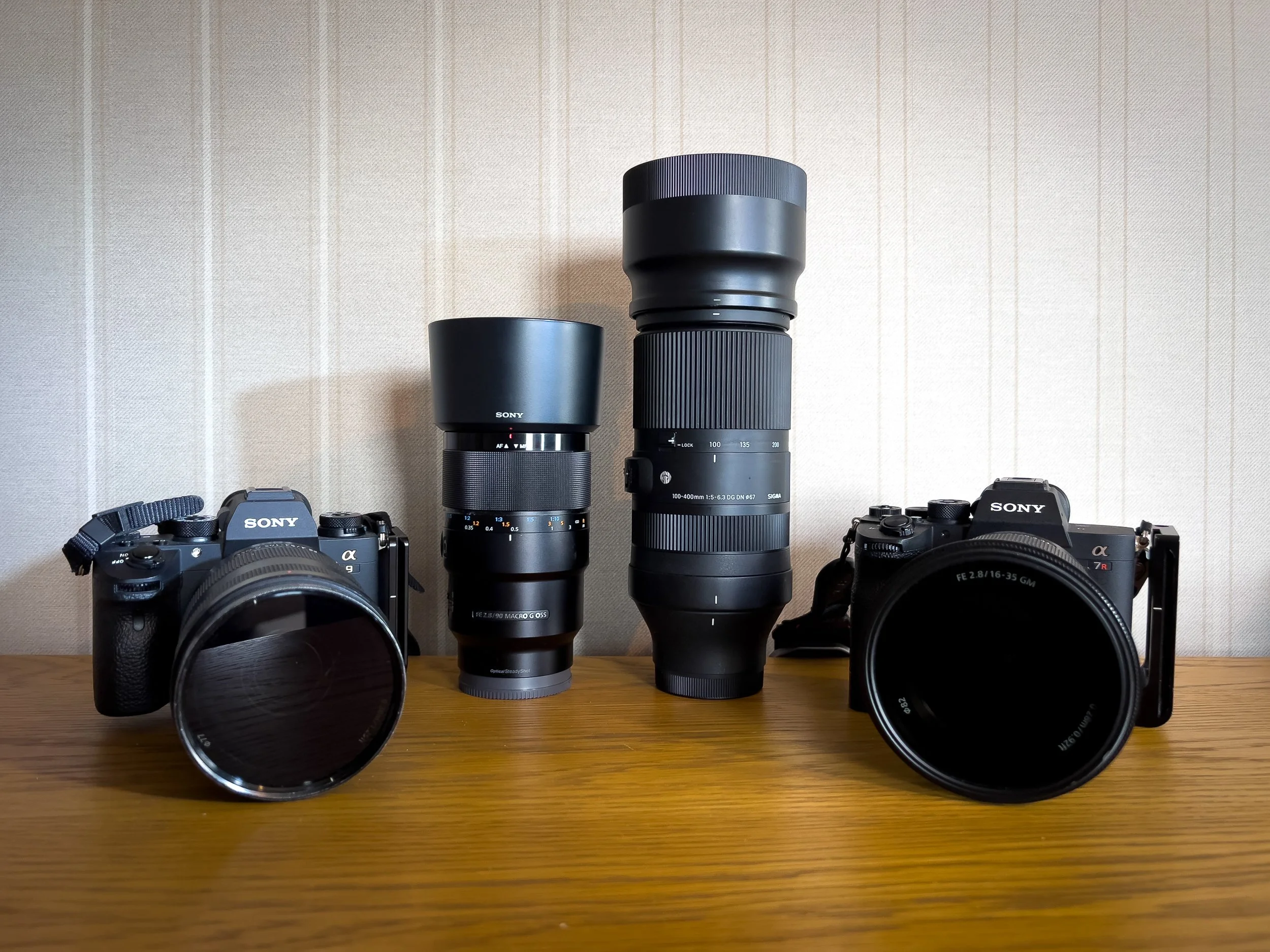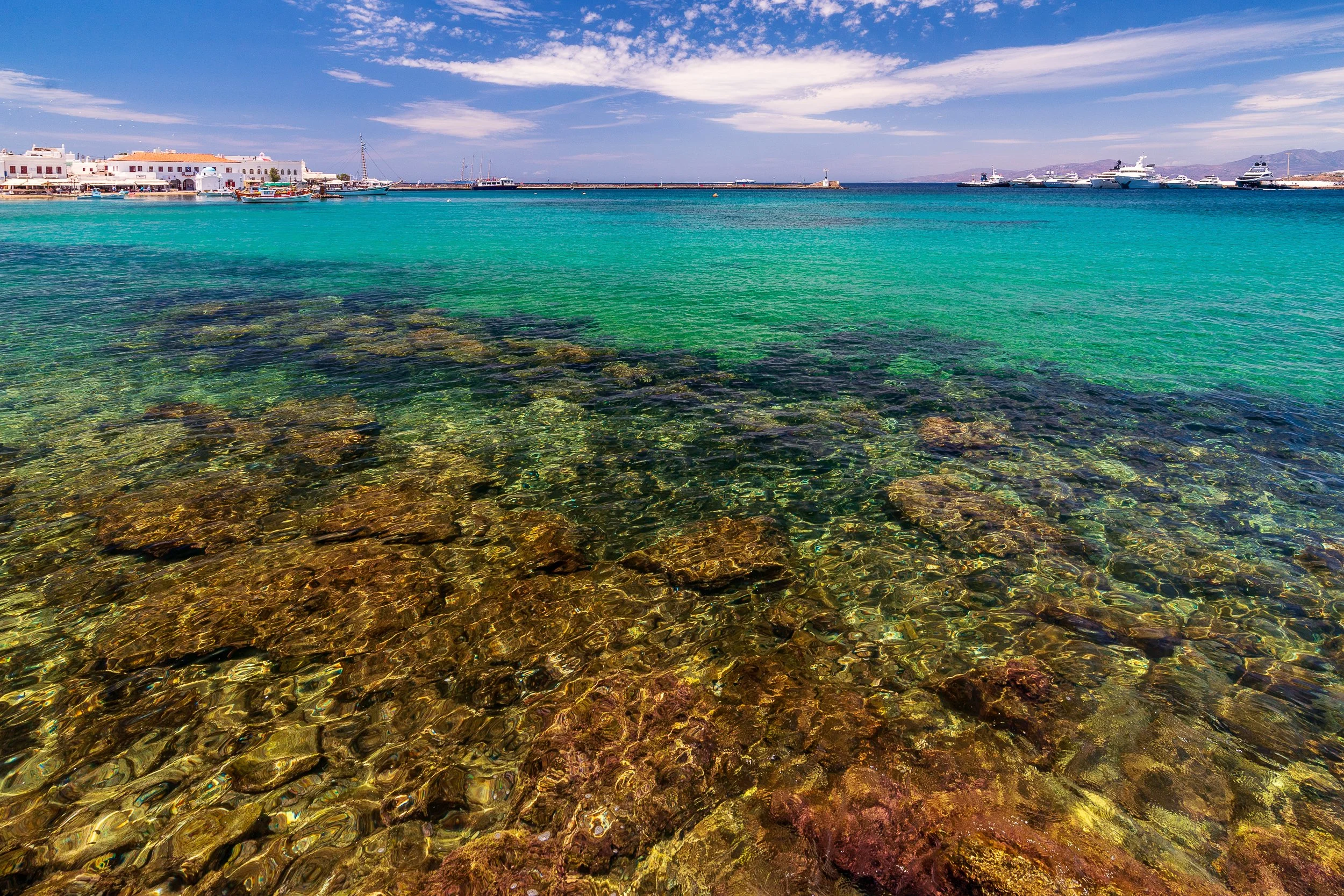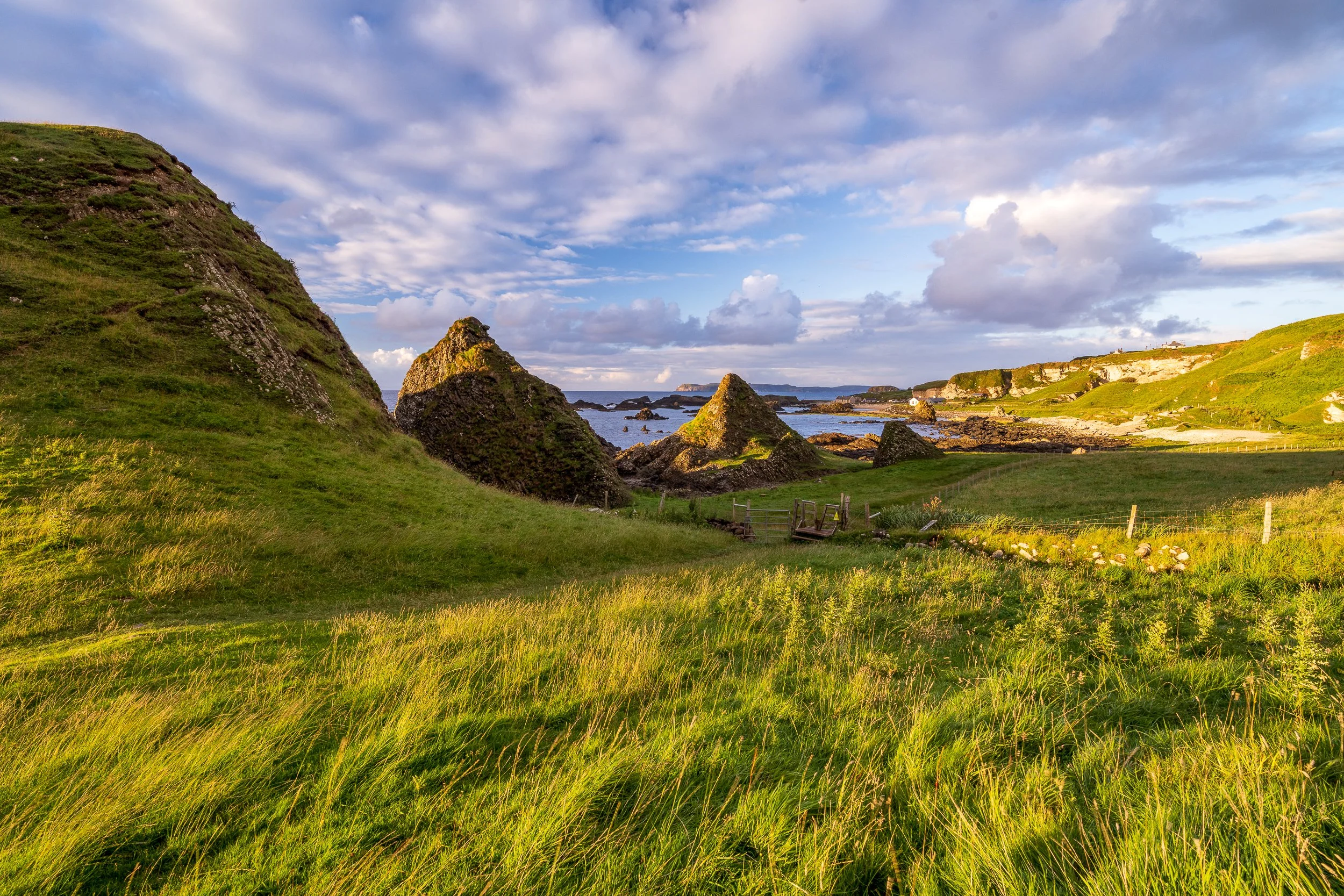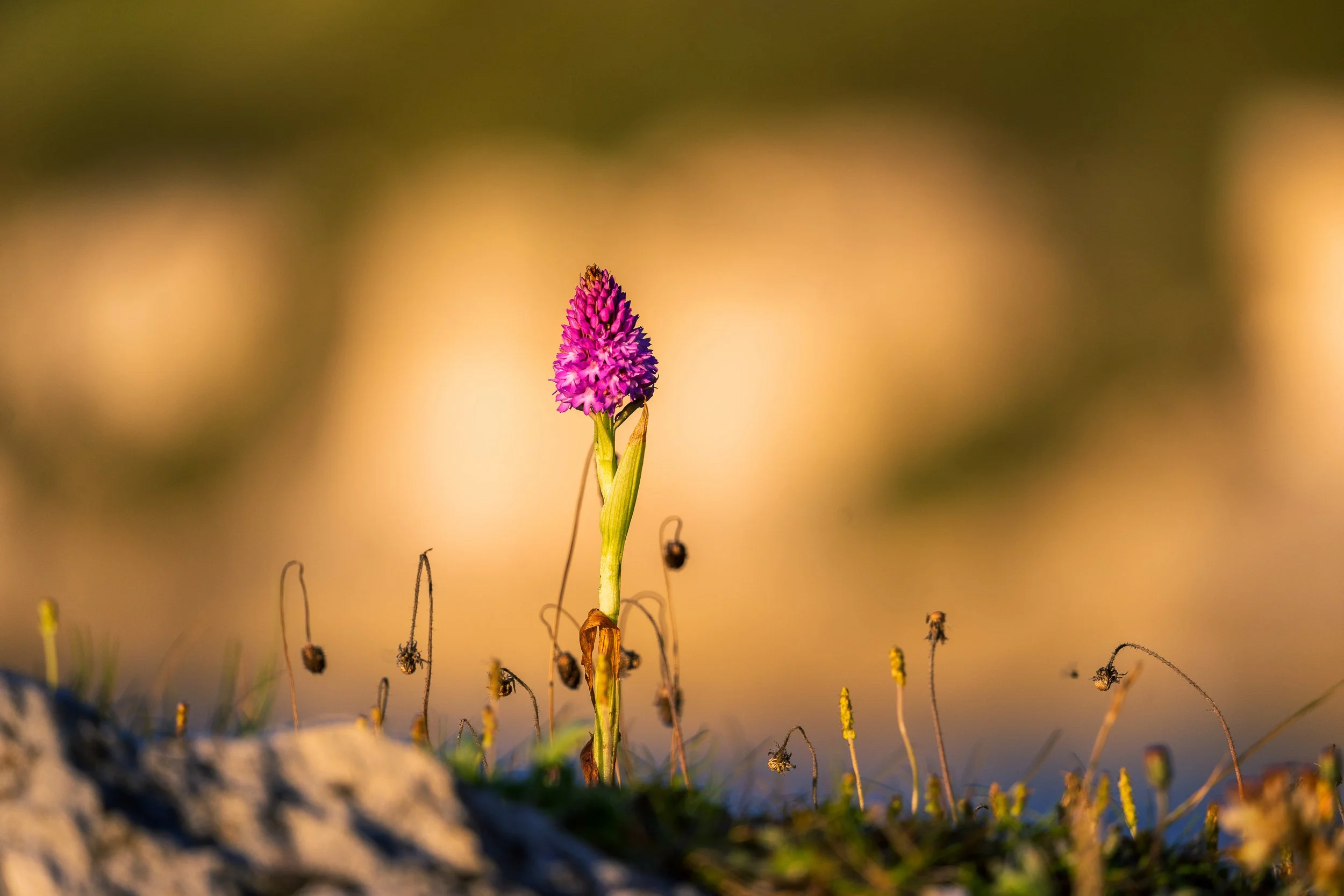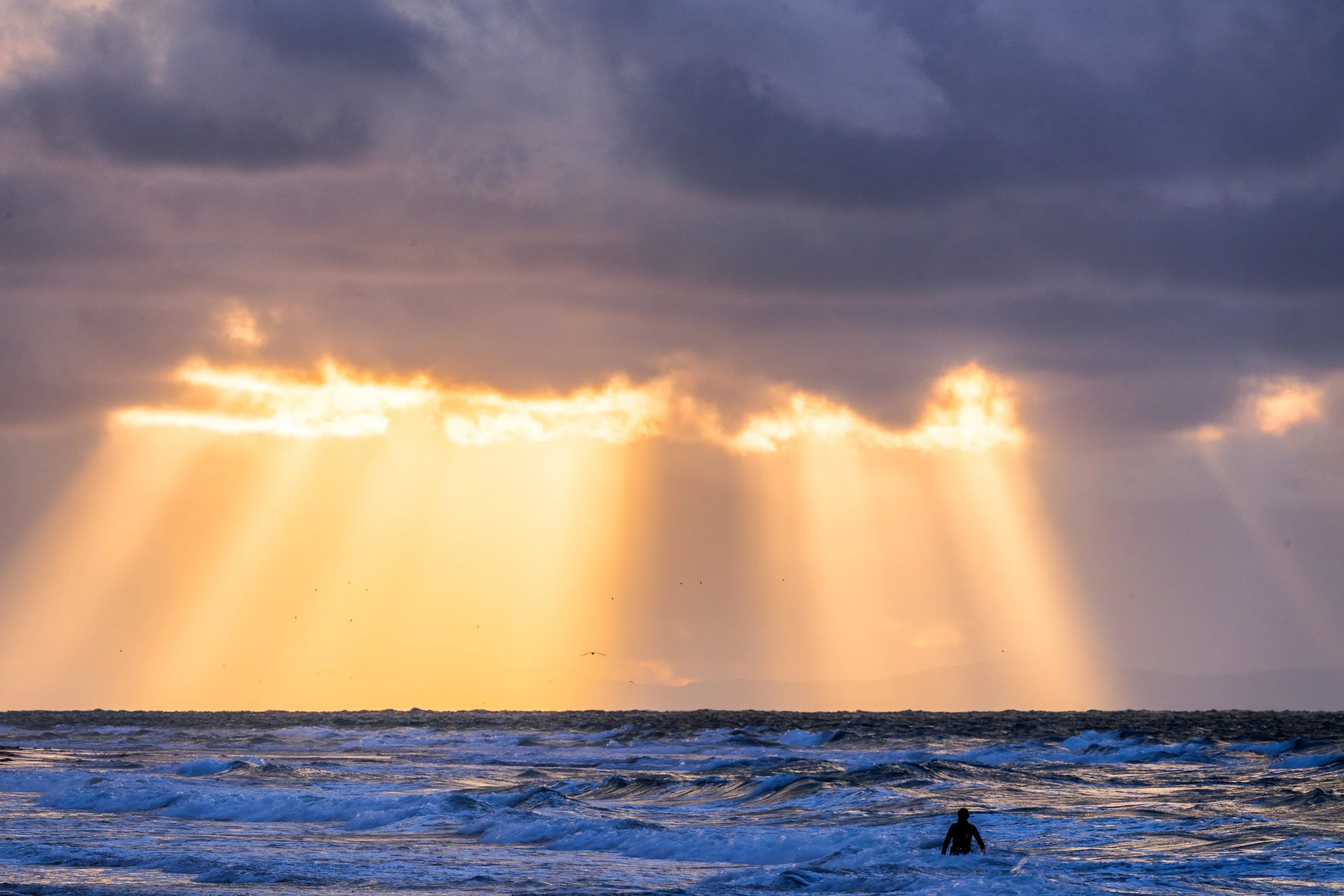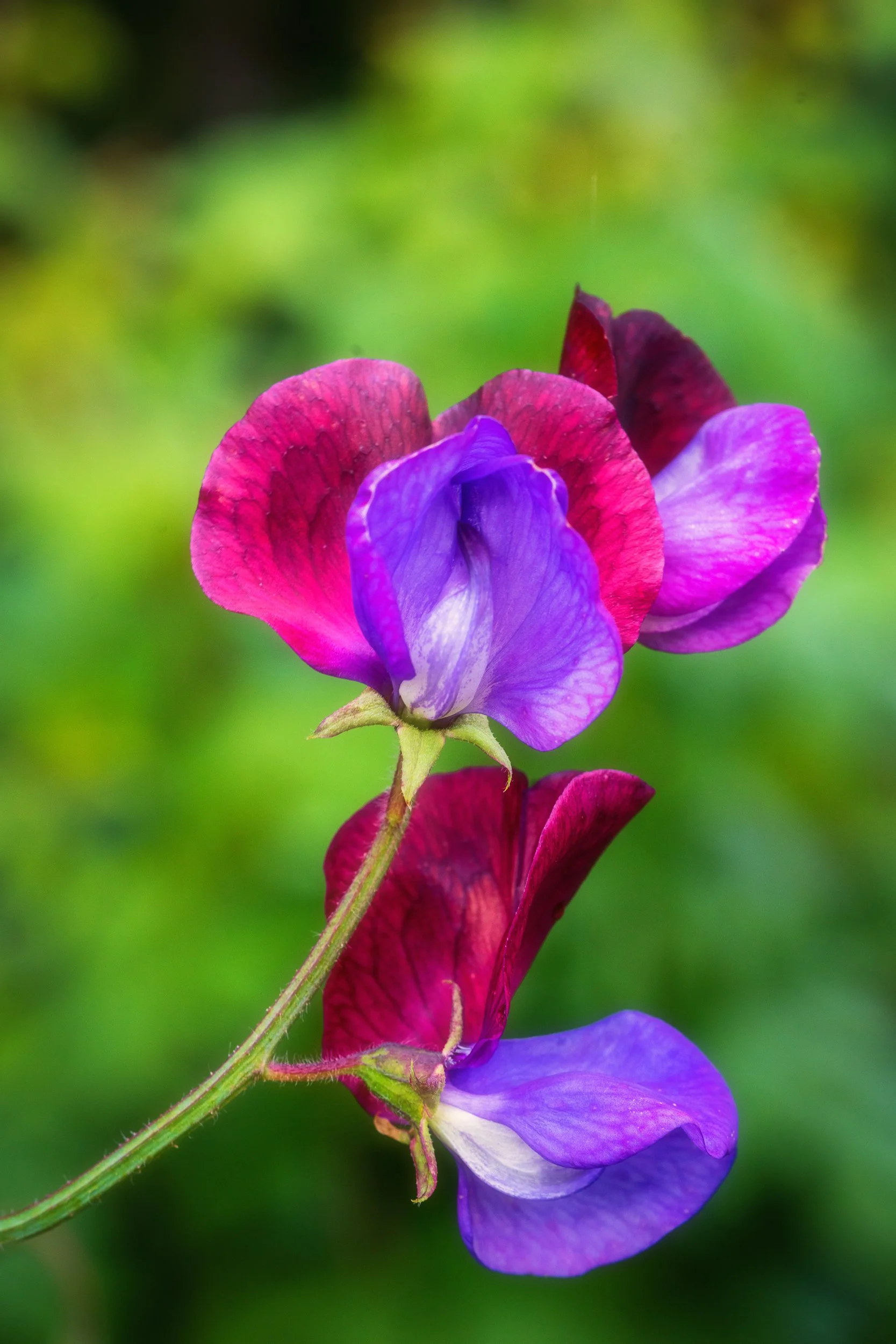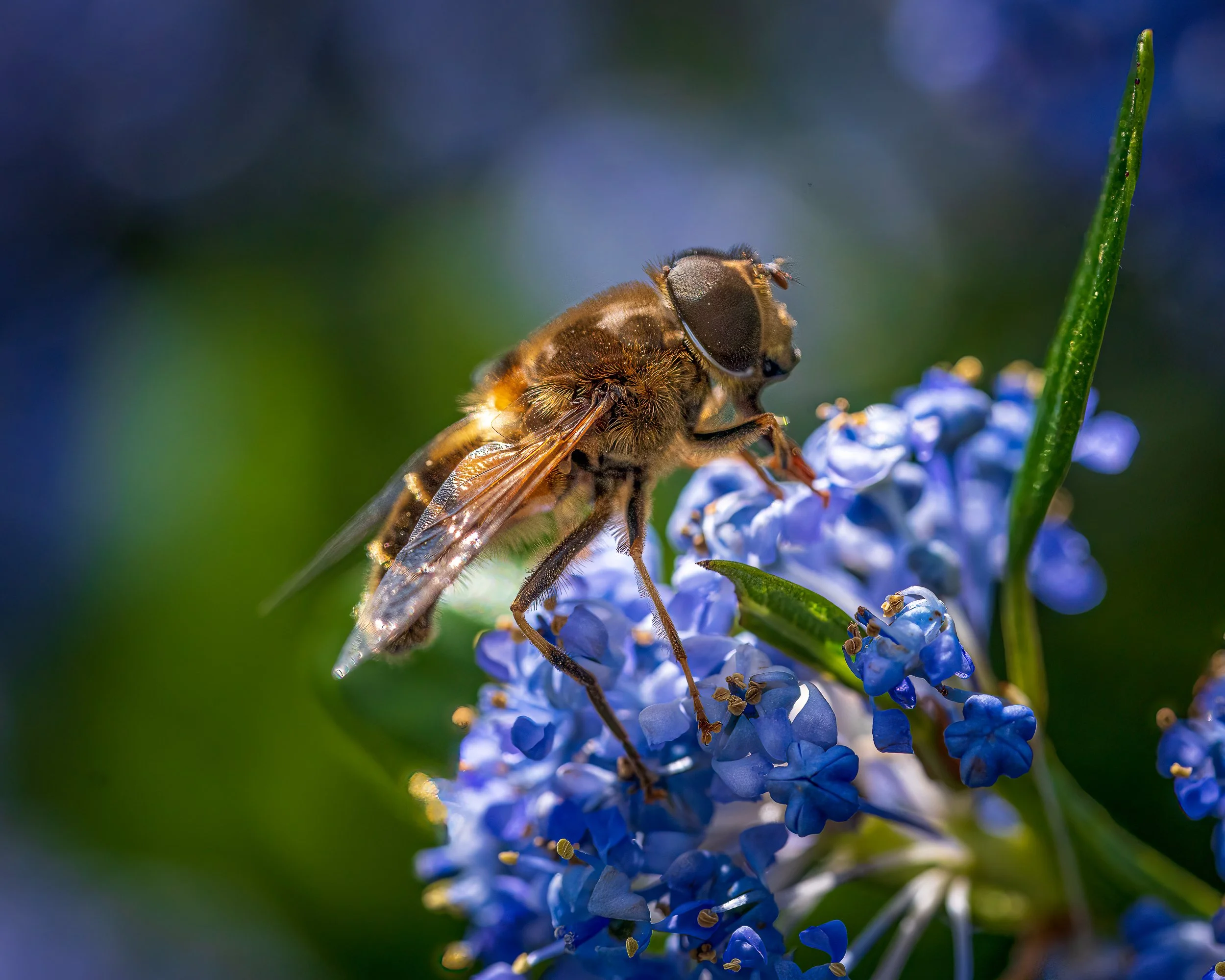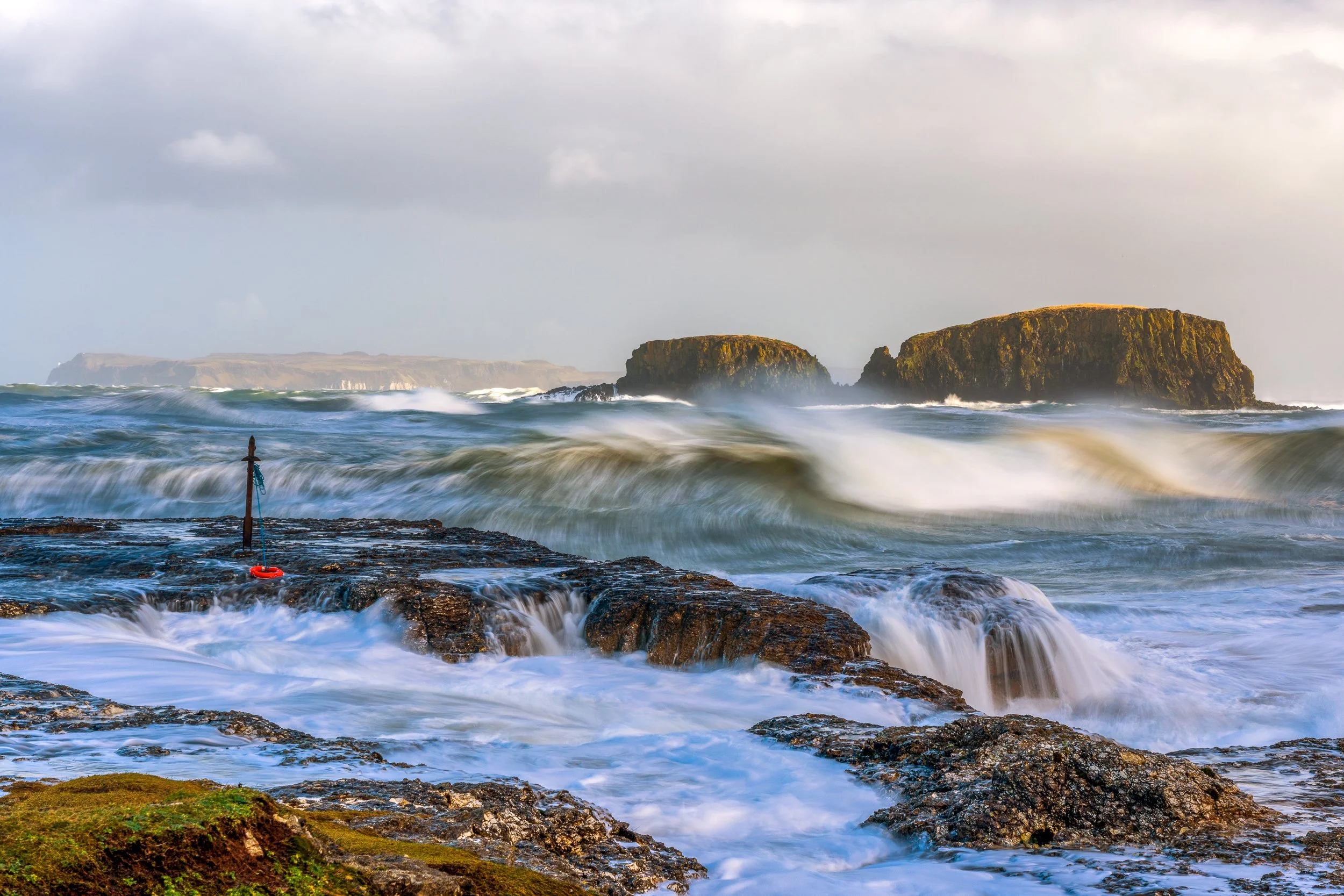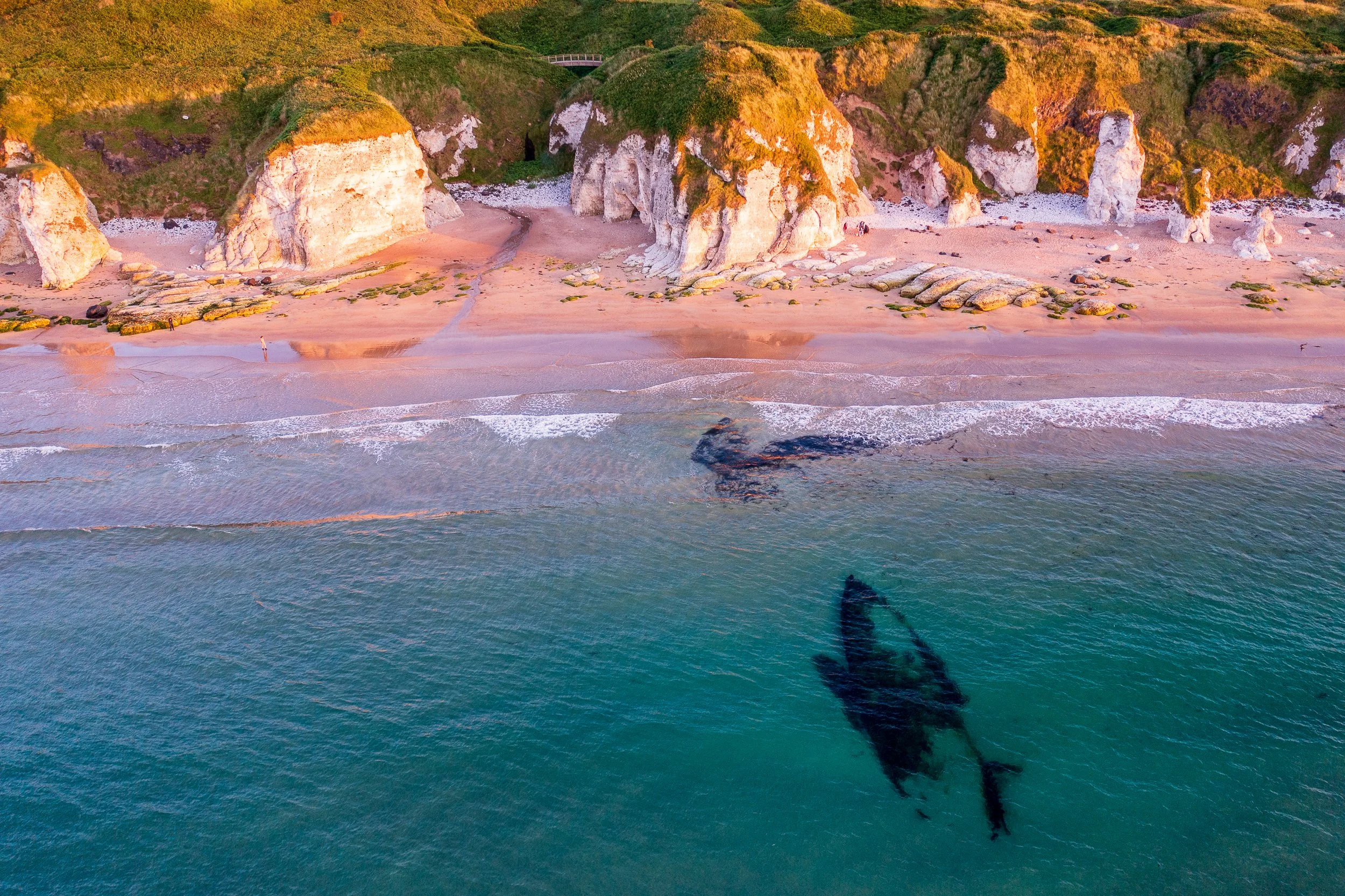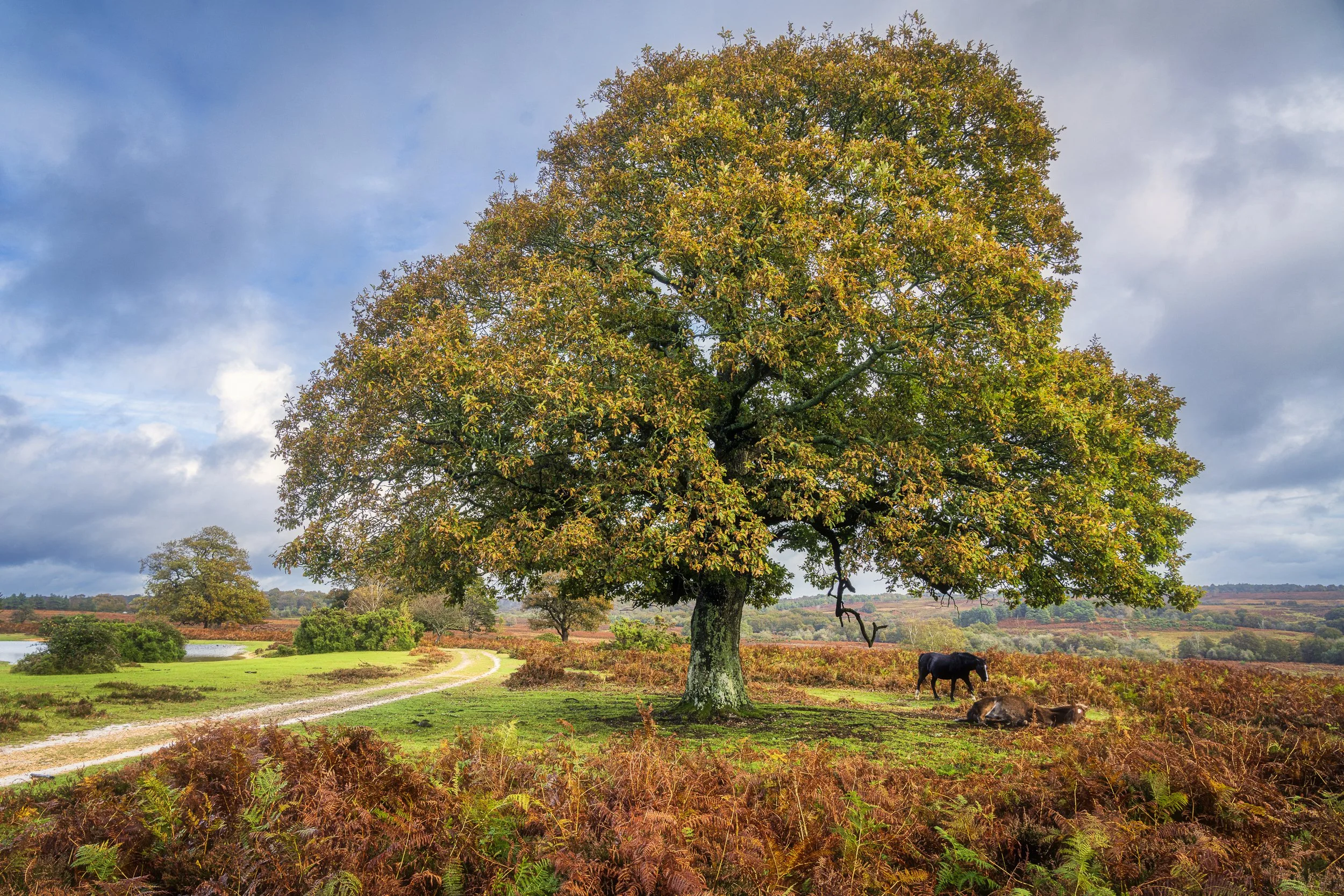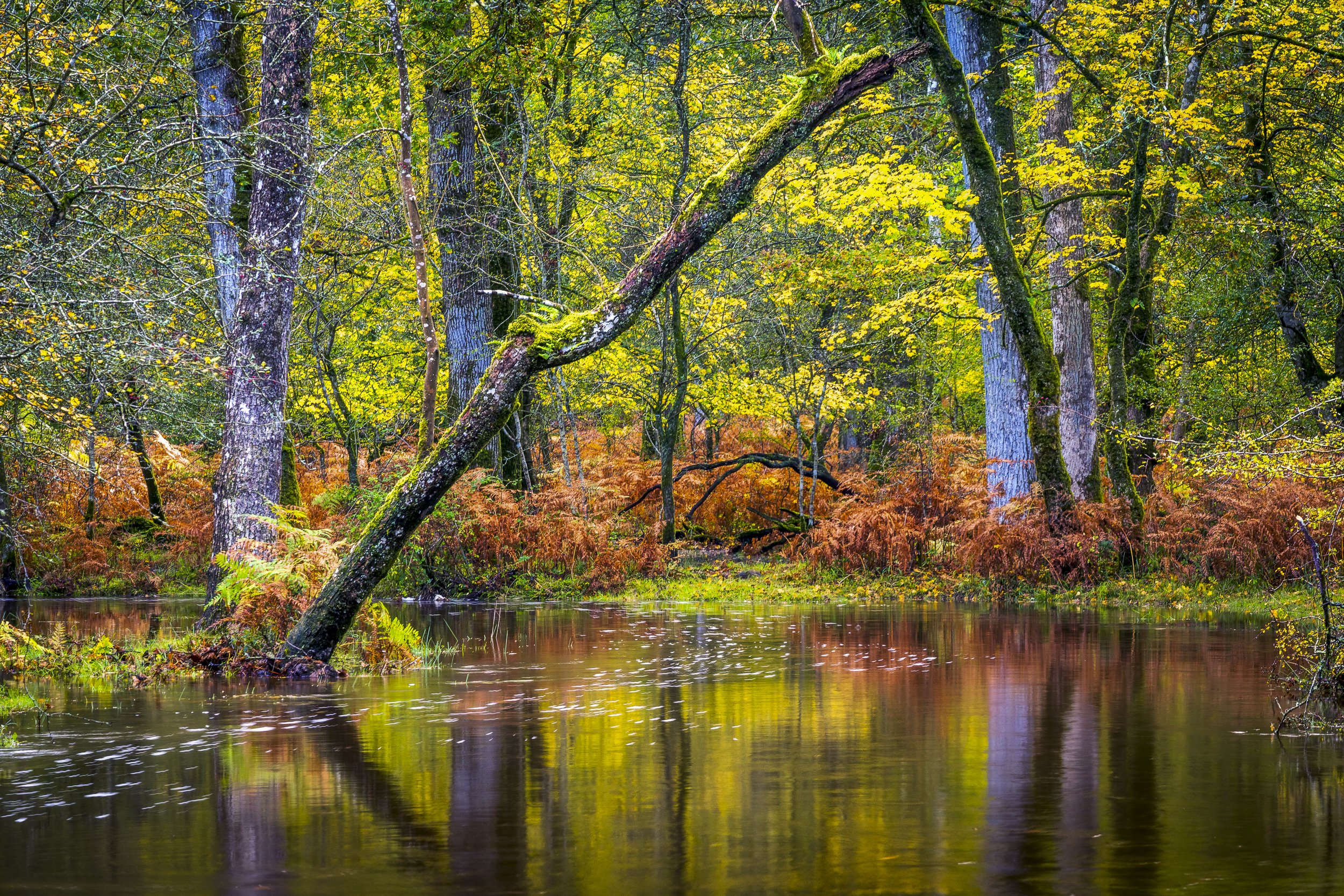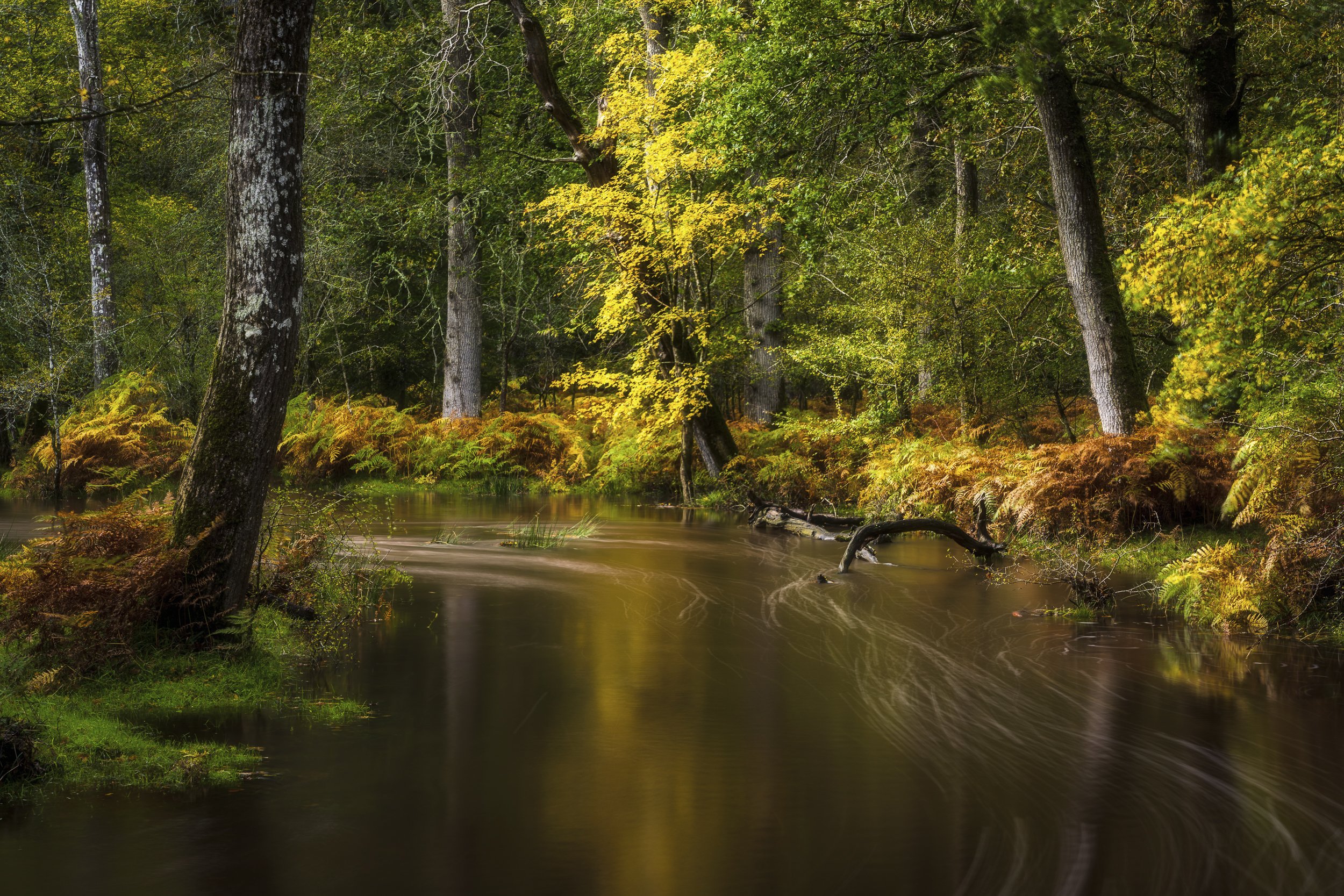
reflections
on photography and life
2022 The Year in the Landscape
When I was six a year seemed a very long time. After all, according to the important facts I was learning in school, it was a sixth of my entire life! The seasons changed slowly and the summers especially seemed to last forever. But now a year is a mere 69th of my entire life. Everything speeds up, except life in the dentist’s chair.
When I was six a year seemed a very long time. After all, one year was a sixth of my entire life! The seasons changed slowly and the summers especially seemed to last forever. But now a year is a mere 69th of my entire life. Time speeds up, except time spent in the dentist’s chair.
A moment of light in the heart of the Mourne Mountains during one of several hikes in January of this year.
One of the great gifts of photography is in relation to time. A photograph doesn’t just capture a moment but according to my photographer friend Kieran Dodds it ‘liberates’ a moment. It triggers the memory, It expands the moment. It sets it free to be examined, relived, reimagined, savoured.
Golden threads of dead grass caught in winter ice on a mountain trail. We don’t often look down.
Cameras don’t take photographs. People do. It is a very personal activity. It involves noticing. It involves responding to what catches the eye and the imagination. It involves deciding what to include and what to omit, what tells the story and what would get in the way. It involves a conscious decision when to press the button.
Sheltering out of a ferocious, bitingly cold wind, I discovered this little scene in the mountains which tells something of the experience.
Here are some of the scenes in the landscape that called for my attention this year, one for each month. Each has a personal story. Each reveals something about me. But each is also an invitation to you to take time to look and to allow each photo to speak, trigger a memory, evoke a longing; to become a window into a real or imagined life.
January
On a crisp, clear morning in early January we (Steven Hanna, my long-suffering photography companion and friend) made the long hike up the Annalong valley to this vantage point on the slopes of Slieve Bearnagh that provides a sweeping vista of Ben Crom reservoir and the high Mournes. Only a slight dusting of snow remained as the sun rose casting shadows and golden light across the landscape. I sat for a long time on cold granite following the peaks and troughs spread out before us like a panorama of life.
February
This slice of time, captured at 1/1000 of a second, is an example of liberating a moment, enabling us to press pause and consider the details of a storm. Watching a storm of any kind is very different from being in one. And I am more wary now, after losing two cameras to the sea. But there is a dreadful beauty that draws me back and back again to these monsters stirring in the deep, tossing their heads against a black sky.
March
As dusk fell on an afternoon walk in early March the sky coloured deep pink, reflecting on the sea, between rank after relentless rank of waves, driven by the wind and pulled by the incoming tide. I love this view across the bay of ancient Dunluce Castle. This is a place to breathe and dream. A place to watch and pray.
April
A cold and (we hoped) clear April night brought an opportunity to photograph the Milky Way. Layered up, we (or perhaps it was just me) laboured up steep slopes through Hare’s Gap, through frozen snow, head torches lighting our way beneath the stars. Then clouds rolled in. Hour after hour was passed in anxious and freezing (-4C) expectation. (At my age - seriously?). And then the sky cleared to reveal our place in the universe. Humbling, awe-inspiring, worship inducing moments.
May
Back to my favourite beach and to the cliff path that provides this view across the limestone cliffs and sea stacks that provide the name Whiterocks. By May the sun has moved sufficiently north to bring light and colour and a little warmth, with glorious views East and West.
June
Another storm but a complete change of scene. The trip of a lifetime, with my son Simon, on a clipper ship, following some of the 1st Century journeys of one of the great intellects of any century, and one of the few who changed world history, Saul of Tarsus, aka Paul, the great teacher, missionary, defender of Christianity, martyred for his faith in Christ. Shortly after leaving Philippi, this storm suddenly blew up over the Thracian sea with a dramatic cloud that turned a mountain into a volcano. Thankfully on this occasion there was no shipwreck!
July
A deeply personal scene for our family of Castlewellan Castle, where, during weeks of summer fun, relational depth, personal faith and lasting memories were built. During a short reunion this summer with other families from those now far-off days I used the drone to photograph the castle in its surroundings as the sun was setting.
August
A photo from an evening spent on the Causeway Coast, at the aptly named Giant’s Head. It requires a bit of a scramble to get down to sea level here. I was grateful for the company of fellow photographer Richard Watson. Some journeys are better travelled together!
September
September brought a highly anticipated trip to the Pacific North West, Washington State and Oregon. Unfortunately, the day after we arrived the smoke from a thousand forest fires moved in rendering all grand vistas virtually impossible to see, let alone photograph. I found out later that they count five seasons in this part of the world, the fifth being smoke season! All was not lost, however, as this scene near Moulton Falls, with its early autumn colours, illustrates.
October
The imposing cliffs of Fairhead provided me with October’s scene as the low sun of late autumn caught both the headland and the low lying rocks between it and the fine beach at Ballycastle. It was the transforming impact of light that caught my eye, even though I had gone to the beach with the purpose of trying to photograph sea birds.
November
Autumn colour is normally at its peak in early November and it is many photographer’s favourite season, especially if accompanied by mist. Our visit to the New Forest didn’t coincide with mist this year but I enjoyed a couple of early mornings out on Rockford Common, near to where we were staying with good friends. David joined me on this occasion as the sunrise lit up one of the lone birch trees that stood in a sea of fiery red bracken. There is something about a lone tree, especially one as graceful as this, that is a magnet for artists. Is it the individuality that especially appeals?
December
Hoar frost is something of a rarity in Ireland and when it arrives you have to try to make the most of it, without crashing the car or falling on the treacherous roads. I managed to avoid these dangers by remaining close to home, where I photographed this old farmstead, attracted by the frosted tree tops, the red roof and of course the donkeys. It is possibly my wife’s favourite photograph of mine this year, which makes it more special to me. Not quite the ‘bleak mid winter’ but it is hard not to think of the bigger story, not just behind Christmas but life itself.
If you have made it this far you have my thanks. I hope that even one of the photographs has stirred your heart and imagination. May you know light in the darkness.
Winter sunrise, Gallows Hill. A window on home.
To see the moon rising
For week after monotone week in early summer it seemed that neither sun nor moon would be permitted to shine down upon the residents of North Antrim. A hoizon-to-horizon blanket of grey enveloped us with its unwelcome insulation. Clouds with form and texture would even have been a welcome relief. But no. Just one seemingly endless cloud, largely without rain, often requiring the central heating to be kept on too far into the year. Really makes you want to read on, doesn’t it? But wait.
For week after monotone week in early summer it seemed that neither sun nor moon would be permitted to shine down upon the residents of North Antrim. A hoizon-to-horizon blanket of grey enveloped us with its unwelcome insulation. Clouds with form and texture would even have been a welcome relief. But no. Just one seemingly endless cloud, largely without rain, often requiring the central heating to be kept on too far into the year. Really makes you want to read on, doesn’t it? But wait. Things change. Hints of summer, gaps in the cloud and then a few days of glorious warmth and clear night skies. Timed to perfection with the rising of the Sturgeon Moon, the last so-called supermoon of the year.
Time for another adventure with Lucy!
Ideally the best time to ‘shoot the moon’ is the day before it is at its fullest, because it rises when there is still enough light to include details in the landscape. But we could only go on the day itself.
We chose the little coastal village of Cushendun, with its easy access beach and clear view to where the moon would rise out of the sea.
It’s a long, twisting road over the Glens to reach Cushendun. With what relief Lucy tore off her socks and shoes and stepped into the calm waters. The dark band of night lay in a thin line across the horizon growing and stretching as it slowly pulled the glorious colours of dusk into deepest blue.
After a long paddle, Lucy arranged her folding chair on the sand, wrapped a fleece around her as the warmth of the day seeped away and waited.
A faint deep red glow low down on the horizon and then a rounded shape, like a newly minted coin emerging from a hidden forge. As it rose its light grew stronger and red melted into liquid gold.
It sat for a moment, rather misshapen and then escaped from the clutches of the sea to rise triumphant into the darkening sky, shooting a golden track across the sea to where we watched in total silence.
Moments of magic like this tend not to last, except in the memory, and, in our case, in the photographs. They won’t win any prizes. There was no iconic landmark to showcase. Just the sea, the sky and the moon. But we made a memory, Lucy and I. And when I am older and greyer and nodding by the fire, perhaps I’ll not need a photograph, but in my mind savour again seeing the wonder in her eyes, her face glowing in the red moonlight.
My Outdoor Photography Setup for 2022
Two years have passed since I wrote my last gear update, an indication that either gear no longer holds the same interest for me, or (more likely) that I just didn’t get around to doing it!
Change
Two years have passed since I wrote my last gear update, an indication that either gear no longer holds the same interest for me, or (more likely) that I just didn’t get around to doing it!
Much hasn’t changed. I haven’t been seduced by even more megapixels or larger sensor size. The Sony still does the job I need and then some. But there have been a few additions and subtractions as my photographic interests have changed somewhat. Covid restrictions forced me to experience the outdoors closer to home, which in turn led to an unfinished personal project photographing birds in flight, as well as greater interest in macro and abstract photography. Once restrictions eased I found myself spending much more time in the mountains, travelling lighter when I could.
This is my basic setup consisting of two camera bodies, three general lenses and one specialist lens. Thanks to the great generosity of a kind friend this year I have added the Sony A9 to use alongside my A7R4 both as a backup camera, in case something goes wrong (as it did in the Mournes early this year!) and for shooting Astro. With its fewer pixels and larger individual pixel size, it is much better than the A7R4 in very low light.
In addition I now have the Sony 16-35 2.8 for both wide-angle and night sky photography, replacing the Zeiss 18mm. Although it is heavier than the Zeiss, it shoots wider and does more. I have retained the 24-105 although I am using it much less, and also the 100-400, which I am using a great deal more, especially for birds, when the crop mode of the A7R4 comes into its own, still giving me a 26mp photo. The specialist lens is the Sony 90mm macro, which also doubles for portraiture. I normally leave it at home when going on a trek or overseas trip. The other three lenses together allow me to shoot for 16mm to 400 (600 in APSC mode) which generally is more than enough.
The lenses in action
When I need to go wide the extra 2mm of the 16-35 over the Zeiss 18mm is most useful as here to capture the drama of the clarity and colour of the sea on a recent brief visit to Mykonos.
Another example of the ‘big foreground’ effect of using the 16-35 at its widest, to capture the sunlight on the grasses along the coastal walk at Ballintoy.
A panoramic image of the Mountains of Mourne, using the 24-105 (five images stitched together in Lightroom).
The versatility of the 100-400 is illustrated here with its ability to pick out a small object and make it large in the frame, while blurring the background, which in this case are the cliffs at Whiterocks.
The 100-400 is so useful in ‘finding a picture’ in the middle of the chaos of a busy beach in summer.
The macro lens comes into its own in the garden.
And for shooting bugs!
Other landscape essentials
My tripod is a Gitzo GT2545T which I use in combination with an Arca Swiss P0 ball-head, a reasonably lightweight setup which I can still manage (just about) on a longish trek.
Another essential piece of kit for tripod work is an L bracket - I have the SmallRig version on each camera. This allows me to change my camera from landscape to portrait orientation very efficiently. With the amazing dynamic range of the Sony I use graduated filters less and less, but still occasionally use neutral density filters to slow down the shutter speed, especially when shooting water. I purchased the new Kase magnetic polarising filter this year and have found it excellent so far. When using the tripod, I also use the Sony remote to help avoid camera shake. It also helps greatly in wave photography to get the timing right.
Of the making of bags…
I switch between three bags. A small Manfrotto messenger type bag suffices for a one lens setup - when out with the family, for example. (Although nowadays I usually just bring my iPhone.) A slightly larger Manfrotto messenger bag works for a two lens set-up, especially for travel as it easily complies with all carry-on regulation. For landscape photography in the UK and Ireland, especially if it involves any degree of trekking (and it usually does), I use a Mindshift (ThinkTank) BackLight 26L backpack. It just about copes with the Sigma 100-400 and shows no sign of falling apart in spite of my best efforts. A slightly deeper bag would be helpful.
BackLight 26L
I also have a drone. It is a Mavic 2 Pro. It is amazingly stable even in a brisk breeze and the 1” sensor/Hasselblad lens combo is excellent for stills, including panoramas.
Without the drone this kind of shot would be impossible. This is a glimpse of the wreck of the Devereux. which sank on September 5, 1864 with its cargo of wood. Due to winter storms shifting the sands here, the wreck has become visible again.
If I ever get around to it, next year’s gear update will be written as a 70 year-old! I wonder what changes there might be!
2021 The Year in Photographs
At the turn of each year I put together a collection of my favourite photographs from the previous twelve months. I find this fun to do and I also learn from the exercise. These are not necessarily my best photographs, nor the most popular on social media. But they are the most meaningful to me.
At the turn of each year I put together a collection of my favourite photographs from the previous twelve months. I find this fun to do and I also learn from the exercise. These are not necessarily my best photographs, nor the most popular on social media. But they are the most meaningful to me.
Frozen.
One morning in January I discovered that a container I used for gardening, which had filled with all kinds of leaf debris and winter rain, had frozen over, trapping thousands of little bubbles in the ice. It gave me an idea. I added some more leaves and stones from the garden and left the container overnight on the promise of more sub zero temperatures. I wasn’t disappointed. It was fun using my macro lens to isolate small scenes in my frozen landscape - until the cold became too much for me! This was my favourite composition because its colours somehow reminded me of my sister’s sense of style. I had the photo printed and framed for her birthday, much to her delight (especially as it perfectly matched the colours in her main room!). So this photo will always hold a special meaning.
We also had snow in January. Not a lot but enough to allow me once again to photograph the trees of Gallows Hill where we live.
You and me. Photographed during a rare spring blizzard, these ageing trees are still standing, holding on to each other through all weathers like an old devoted couple.
I’ve been photographing these trees consistently ever since we moved into the area, as a personal photographic project. I’ve photographed them in all seasons and all conditions. Perhaps it is time, after almost ten years, to do something with them?
Smile.
April provided me with the best post sunset conditions I have ever experienced at Ballycastle beach. When I showed the photograph to my wife she told me it looked as if the sea was smiling!
Passing Through
I was introduced to this location (Hamilton’s Seat on the Causeway Coast) by Steven Hanna, who, on so many occasions has been my photography companion and teacher. I will always associate this view with him and his friendship. On this occasion in May the passing squall provided the perfect background drama to what is one of the most dramatic views on the entire island. We’ve photographed there on many occasions now but this year provided me with the best photo I’ve managed.
Hare’s Gap
At the summer solstice the sun is sufficiently far north to light up the valley that leads to the famous Hare’s Gap, one of the iconic locations in the Mourne Mountains. This was my first trek to this location, on the slopes of Slievenaglogh and we were rewarded not only by the appearance of the sun but also the moon. A very special day.
Escape.
Mid-summer is often the best time to photograph the Causeway Coast, particularly in the evenings, as the sun sets out to sea and lights up the chalk cliffs near Dunluce Castle. After five or six visits in July, I was rewarded on this evening with a small gap in the clouds close to the horizon. It was sufficient for a few moments of gorgeous warm light on the sea arches and cliffs, contrasting with the cooler colours of sea and sky. The small headland from which I took this photo is one of my favourite places of ‘escape’. To think, to pray or simply to sit and watch the sun sink into the sea.
Harvest.
A drone photograph from early August, showing Ballintoy Parish Church in the timeless rhythms of its context: the cycle of seasons, the local community both living and deceased, working and worshipping in a coastal landscape as the last light of another day fades on distant Fairhead.
What Lucy saw. From an unforgettable summer adventure with my granddaughter, Lucy.
Among the Heather. A second trek up Slievenaglogh, this time in August to photograph the heather in the Mournes. Another ambition fulfilled this year.
Causeway Delight.
I’ve visited and attempted to photograph the Giant’s Causeway many times over the years but have always been rather underwhelmed by the results. After several attempts this year I finally was gifted with an evening of spectacular skies. As is often the case in such an iconic location, it was ‘battling tripods’! I managed to secure a small gap in the group of photographers just in time to make this photo. The measure of success is that it is the first photo I’ve taken of the Causeway that my wife likes! I simply had to include it here.
Autumn Playtime
A glorious autumn day in the New Forest, during our visit to Dorset in England, as the sun lit up this magnificent oak tree. Even the ponies came out to play.
Hidden Magic.
Autumn is a favourite season for many photographers, for good reason. This year I visited this beautiful waterfall in Glenmalure, Co Wicklow for the very first time. Hidden from the nearby road by a thick screen of trees, it is a magical location.
The Bridge. Perfect conditions for a return in November to Cloghleagh, Co Wicklow.
The Stepping Stones. Tollymore always rewards a visit or three every autumn and this year proved exceptional.
Gathering Storm
Winter in Ireland often experiences Atlantic storms so when Storm Arwen was announced I couldn’t resist the temptation to head to Ballintoy to capture some of the action. Remembering the disaster of my previous experience of ‘storm chasing’ I was extra cautious!
Pan’s Rock and Fairhead.
My final choice from 2021 was taken in December at what is the closest part of the coast to our home, the beach at Ballycastle and especially the northerly end, with the Pan’s Rock footbridge and the views of Fairhead and Scotland beyond. This photo once again was the result of repeated visits to the same location being rewarded by a coming together of key elements, direct sunlight, dramatic seas and sky detail.
What have I learned this year? At least the following. The importance of paying attention to the edges of the frame. The importance of atmosphere in a photograph. Abstracts can be fun and rewarding. Sunsets can be overdone. I love photographing waves. And writing about photography increases my enjoyment.
If you’ve made it this far, thanks so much for travelling with me!
A world where there are Octobers
“I’m so glad I live in a world where there are Octobers.”
L.M Montgomery, Anne of Green Gables
Anne Shirley’s Prince Edward Island lies at a lower latitude than Ireland yet its autumns arrive sooner. For us it tends to be early November before autumn colour achieves its peak. But to say “I’m so glad I live in a world where there are Novembers” doesn’t sound as inviting.
“I’m so glad I live in a world where there are Octobers.”
L.M Montgomery, Anne of Green Gables
Anne Shirley’s Prince Edward Island lies at a lower latitude than Ireland yet its autumns arrive sooner. For us it tends to be early November before autumn colour achieves its peak. But to say “I’m so glad I live in a world where there are Novembers” doesn’t sound as inviting.
However, this year many photographers on both sides of the Atlantic expressed a concern that autumn seemed to be particularly late. I confess I was one. My reason was rather selfish but, I hope, forgiveable: we had been invited to spend the final week of October with friends who live on the edge of the New Forest in Dorset. Since reading Children of the New Forest in school (many, many years ago!) it has been a dream of mine to experience it for myself one day. But would autumn be waiting for us when we arrived?
The fungi family: dad, mum and four kids! Our first day in the New Forest but no autumn colour.
“No”, was the answer. When we arrived, summer green was still in full flow and as we drove around what is a spectacularly beautiful county, I couldn’t help feeling that something was missing. And then, the day before we returned home, the New Forest was ready for us. Almost over night, it seemed, orange and yellow had moved in. Still October, but on the cusp of November, autumn had begun.
Rockford Common
Every ancient forest is challenging to photograph. They are wild places, following their own rules which don’t neatly fit into our concepts of artistic order. Add to this the newness of this particular forest to me, as well as its sheer vastness and I was well and truly daunted! I had visions of wandering hour after hour, finding nothing that I could make ‘work’ in a photograph.
That’s precisely what had happened on the first day. We saw ponies, fungi, trees but I struggled to find a composition in the landscape. Thankfully during the week I had come across an article on the New Forest which highlighted in general terms some locations rich in photographic potential.
It is often easier to find compositions at the edge of forests or in more open areas so we headed first to Rockford Common, where after a brief shower we were welcomed by a glorious rainbow. This was encouraging! Next we moved on to Bratley View where the sun again co-operated to provide a splash of light on the beautiful lone pine and on some of the surrounding bracken.
The lone pine at Bratley View.
After these early encouragements we decided to go deeper into the forest in an area called Rhinefield, where the Black Water runs. I love the combination of trees and water, especially running water. The image of a tree growing at the edge of water had long since been planted in my mind, from the Hebrew poetry my mother used to quote to me about the blessedness of the person who didn’t walk in step with the wicked, or hang out with those who mock but fed instead on words from above - that person was like a tree planted by streams of water: lots of cool, living water to satisfy the deepest thirst and keep the heat at bay. I spent many long afternoons as a boy climbing trees beside the Folly River, swinging out across the water on a rather doubtful rope and stick combination we all used. No such temptation on this occasion, jut the happiness of finding what I sought.
I hate rushing when photographing the landscape. Sometimes there’s no choice, due either to arriving at the scene after the drama has started - waiting for the light is much better than chasing it - or to the fleeting nature of the moment. Fortunately on this occasion we were under no such pressure. We could stand still, watch, listen, drink in the beauty around us. Sufficient light penetrated the dense canopy to make the colours glow. Yellow, orange and an entire gamut of greens formed a wonderful mosaic of colour. The winding stream and the ancient trees, some leaning at dynamic angles, provided the structure. I could have remained in this one spot for the rest of the day.
Apart from the occasional flap of a wood pigeon’s wings or the snap of a twig indicating the presence of a squirrel or some other small creature, we were enveloped by the special silence of the deep wood. An occasional breath of wind caused movement amongst the leaves, as if the trees themselves were stirring to life and might move or speak at any moment. Then all was quiet again, the noiseless stream at our feet and the air heavy with the intoxicating incense of pine, thick moss and decaying leaves. Overwhelming.
No camera lens is adequate. The human eye sees differently and more. I was drawn to the reflections on the dark, smooth water. They seemed to emphasise the forest’s depth and serve as an invitation to look deeper and go further. At the same time, as I angled my lens slightly downwards, I was conscious of the trees soaring above my head, like the great vaulted ceiling of a natural cathedral, towards the heavens.
Time seems different in the deep forest. Three seasons of the year that is passed were locked into every photograph. And hundreds of years before that. Forests are great preservers of time and history. If only trees could talk… For long moments I looked at the gnarly faces around me, willing them to speak.
This scene stood out for me. Two ancient trees, rotting on their feet but still standing, gather around a fallen friend finally asleep in the bracken’s golden embrace.
For many, autumn has melancholy music, different from the bright green songs of spring. But to be overwhelmed, as I was, doesn’t mean to be sad. I can’t help smiling. I have been given to see 68 autumns and this one is more beautiful than any I can recall. To everything there is a season. The autumn of my life is a time to dance, even with sore muscles and stiff joints. Anne Shirley was right: I’m glad to live in a world where there are Octobers (and Novembers)!

